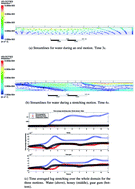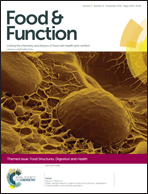Propagating longitudinal contractions in the ileum of the rabbit – Efficiency of advective mixing
Abstract
Three longitudinal motions of the rabbit small intestine were modelled in the CFD software Polyflow using ex vivo experimental data previously reported in literature. Consideration was given to chyme rheology and mixing performance of the macro-scale lumenal motions, as triggered by the observed wall motions. Simulations were performed to qualitatively assess the flow behaviour. The advective properties of the flow were universally characterised by analysing the stretching ability of the flow. Two Newtonian fluids, with viscosities of μ = 1 Pa s and μ = 0.001 Pa s, and a non-Newtonian shear-thinning fluid (Bird–Carreau relationship with n = 0.41, λ = 0.1, η∞ = 5.01 × 10−9 Pa s and η0 = 0.65 Pa s) were investigated. It was found that both the type of contraction and chyme rheology significantly affected the flow and subsequent efficiency of advective motions in the intestinal core. Results also showed that shear rates generated were too small to unveil the pseudo-plastic behaviour of the non-Newtonian fluid. Of the longitudinal motions analysed, the oral propagation was the one leading to the higher, but also the most localised levels of stretching in the rabbit small intestine. This oral propagation was largely characterised by an ordered axial flow and was able to facilitate mixing by stretching material elements in the vicinity of the intestinal wall, particularly in the case of a low viscous water like fluid.

- This article is part of the themed collection: Food Structures, Digestion and Health International Conference

 Please wait while we load your content...
Please wait while we load your content...